

- Contact Us
- Search
-
Mayflower400 partner destinations:
10 things you didn't know about Southampton
Jun 25, 2020
Southampton is a beautiful place in Hampshire, in the south East of England, known for its natural beauty, maritime heritage and cultural highlights.
Southampton is a beautiful place in Hampshire, in the south East of England, known for its natural beauty, maritime heritage and cultural highlights.
If the still-standing old walls of the city could talk, they would tell of centuries of sea-goers passing through their gates - including the Pilgrims who stopped here for repairs and supplies.
Today, it is considered the cruise capital of Europe, and has a vibrant atmosphere with an impressive cultural and retail offering.
Outstanding art galleries in the city include some of the finest collections outside of London and there are many local artists and creatives, too, showcasing and selling their work.
Here are 10 things you may or may not know about Southampton...
1) Southampton was the original departure point for the Mayflower
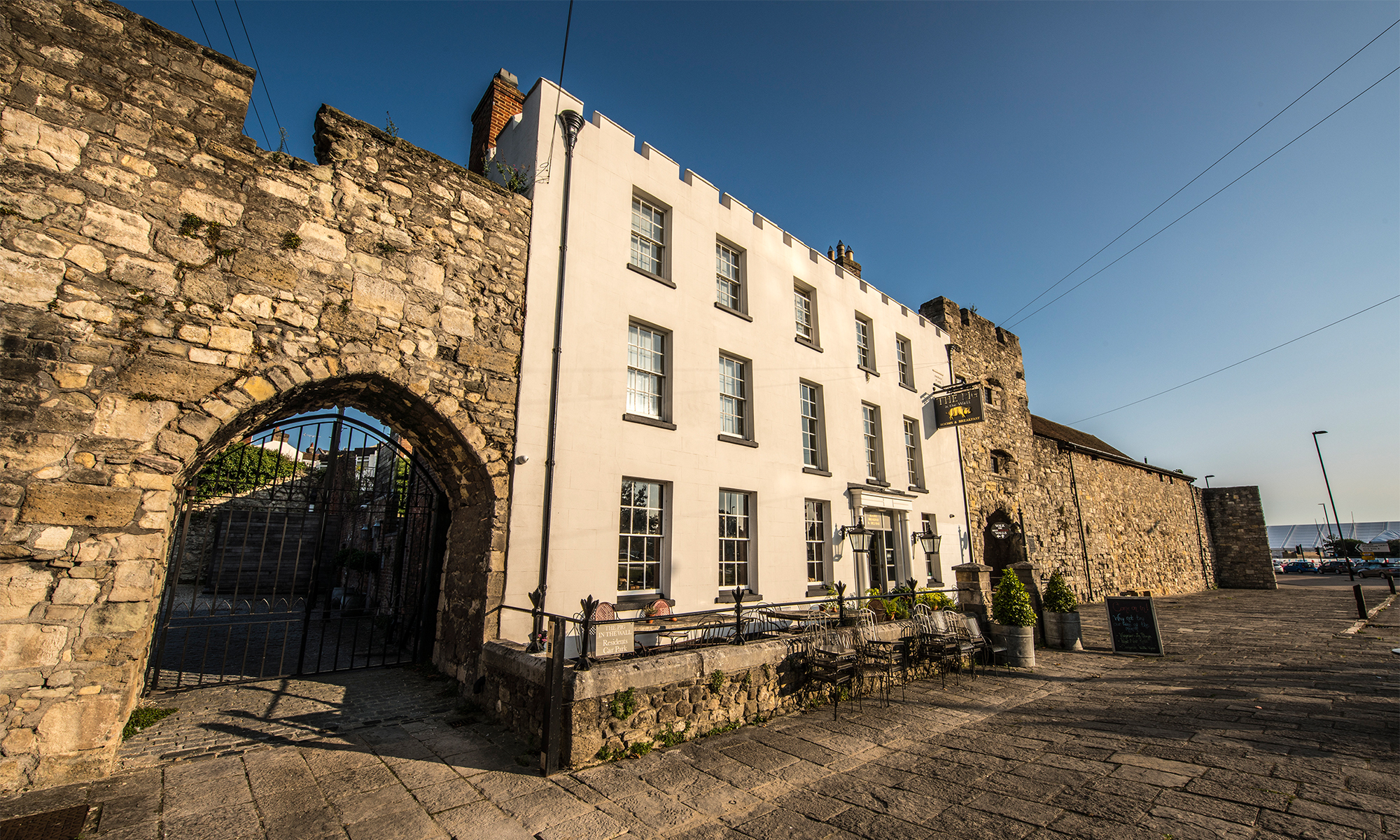
The Pilgrims left Southampton on 5 August, 1620 to embark on their historic transatlantic voyage.
They were on two ships - the iconic Mayflower and the lesser-known Speedwell - and boarded on the south coast of England set for a new life in America.
The Speedwell had leaked on her voyage from Holland but was able to be repaired at Southampton’s extensive ship building facilities near the port’s West Quay. The fact that the city was a thriving seaport also meant it had everything the Pilgrims needed to buy to prepare themselves for the journey.
However, after departing Southampton, the Speedwell soon took on water again - thought to be either because she carried too much sail, straining her timbers, or the result of sabotage by the reluctant crew - and both ships were diverted to Dartmouth, in Devon.
2) Southampton has a grand entrance
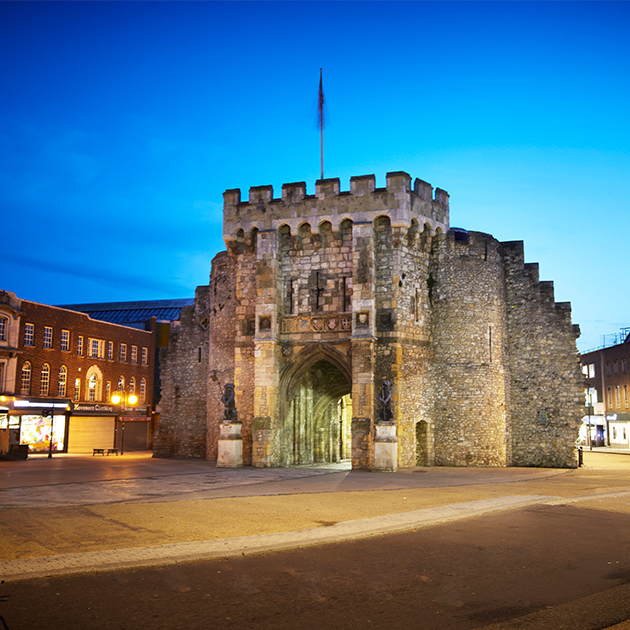
When you visit Southampton, make sure you head to the Bargate, the old north entrance to the city.
It is the main and most impressive of all the town gates and the centre of town government. It was the home of the town court and town gaol.
In 1620 Southampton was a thriving port, with a population of around 4,200 people. Many of the people who lived in the town were Protestant immigrants who had fled there from France and the Low Countries.
Cloth and wool arrived through this gate as well as fresh produce from the surrounding countryside. Outside the Bargate is also the meeting point for official guided walking tours around the old town.
3) The Mayflower was not the only famous ship to sail out of Southampton
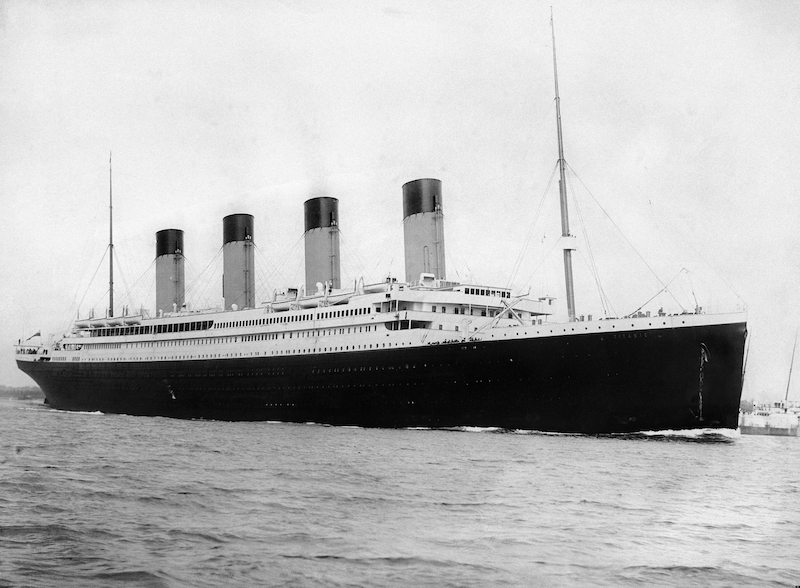
The Pilgrims may have endured a treacherous transatlantic crossing, but they fared better than another famous vessel which attempted a similar journey almost three centuries later.
The RMS Titanic etched its name into the history booked when the grand cruise liner struck an iceberg en route to New York on 14 April, 1912 and sank – killing more than 1,500 people.
Though the ship was built in Belfast and registered in Liverpool, the Titanic’s final departure point was Southampton.
Visit Southampton’s SeaCity Museum and find out more about its historic connections with the Titanic story.
4) Southampton has an award-winning family attraction with a surprising Mayflower connection
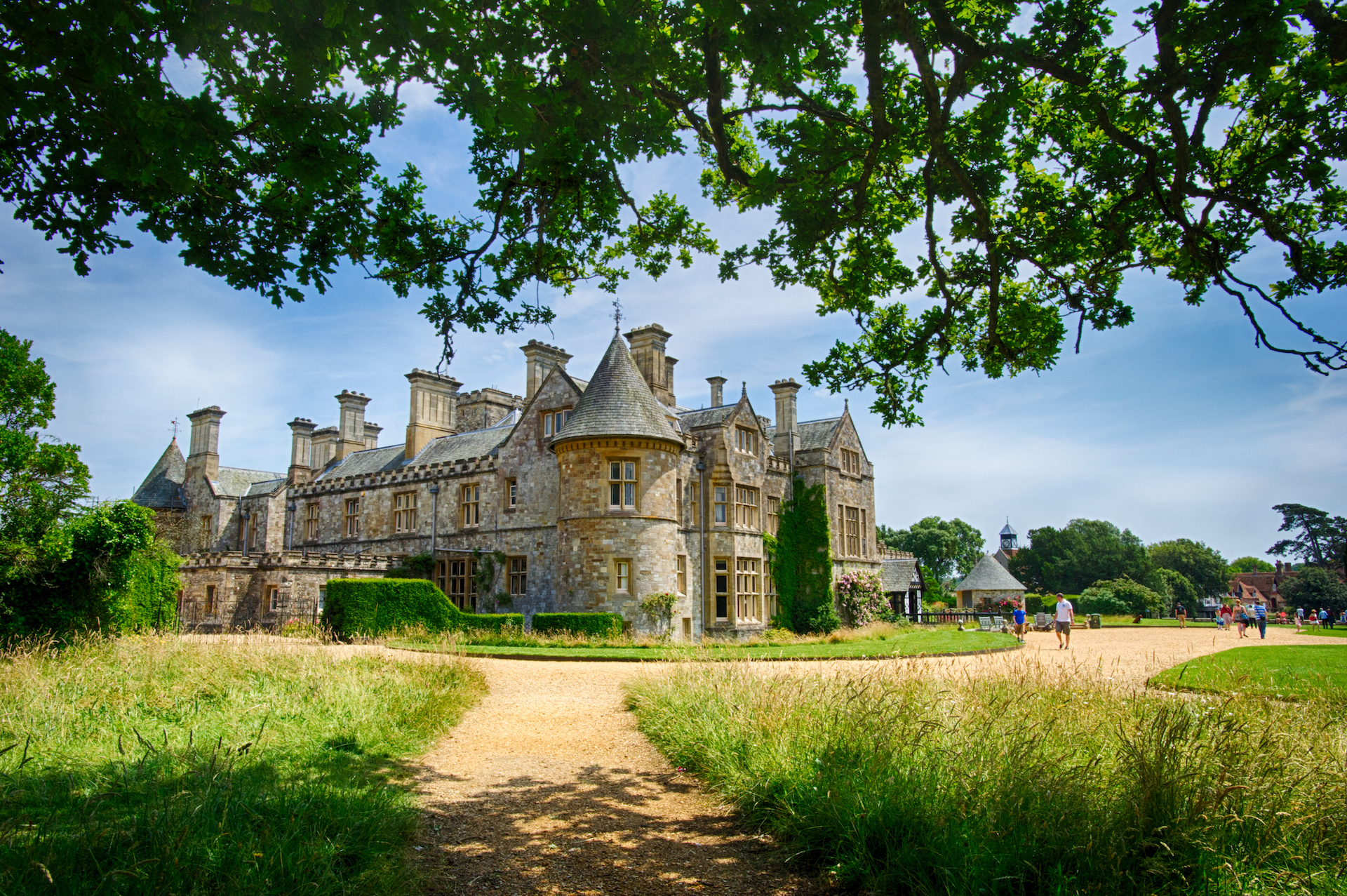
Home to a ruined medieval Abbey, a Victorian-styled country house and a world-famous National Motor Museum, Beaulieu has been home to the Montagu family since 1538.
One of their ancestors, Henry Wriothesley, the 3rd Earl of Southampton, took a great interest in exploration, and was an enthusiastic patron of colonial enterprises.
By the time the Virginia Company was formed in 1606, the 3rd Earl had already contributed to two expeditions to settle in Virginia. Both ultimately failed but the first of them, led by Batholomew Gosnold and Bartholomew Gilbert, resulted in the naming of Cape Cod – which is where the Mayflower would eventually land less than two decades later.
Today, you can visit Palace House and discover more about the 3rd Earl of Southampton, the history of the Montagu family and their links to the Mayflower story. And don't forget to look for the image of the 3rd Earl which is on display in the house.
5) Southampton has its own memorial to the Pilgrims
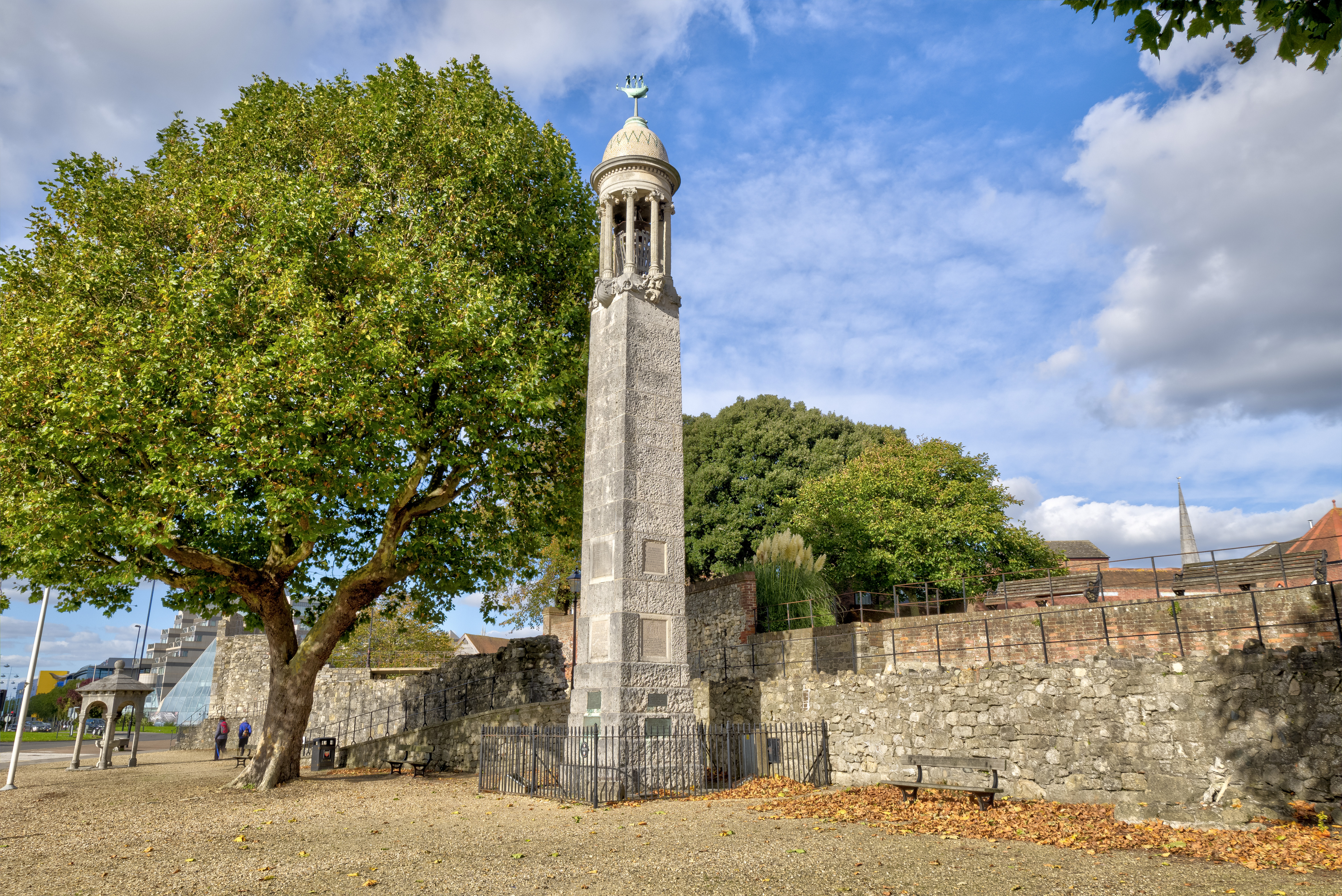
Walk along Cuckoo Lane and you'll soon see the Mayflower Memorial, built in 1913 when it was unveiled by the American Ambassador. It was designed by R M Lucas and built by the local stonemasons Garret & Haysom.
On top of the memorial can be seen a model of the Mayflower, while underneath the model is a representation of a firebox, which would have been found on the ship. It was an iron tray, with sand in it, on which a fire could be built.
Descendants of the original Pilgrims were permitted to fix plaques to the memorial. These plaques include one to John Alden who joined the group in Southampton. He went on to marry Priscilla Mullen and to become one of the Founding Fathers and inspiration to the poet Longfellow.
Another Founding Father, Stephen Hopkins from Hursley, is remembered on the memorial, along with his wife Elizabeth and children Constantia, Damaris and Giles.
6) You can visit the first building the Pilgrims saw in Southampton
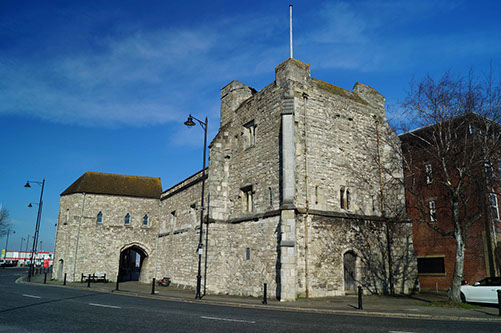
God’s House Tower would have been the first building the Pilgrims on the Speedwell would have seen when they travelled to Southampton from Holland.
The passengers came to meet up with the rest of their party and prepare for their voyage to America. Next to the gate was the Butcher’s Shambles, this is where the Pilgrims could buy the meat for the voyage.
They bought dry ox tongues, known as neat’s tongues, salt beef, spiced beef, smoked beef and pork. The food had to be preserved to make sure it would last for the voyage, which would eventually take the Pilgrims some eight weeks to complete.
Inside God’s House Tower, visitors can even see a scale model of Southampton in 1620.
7) Find 800 years of history in one location
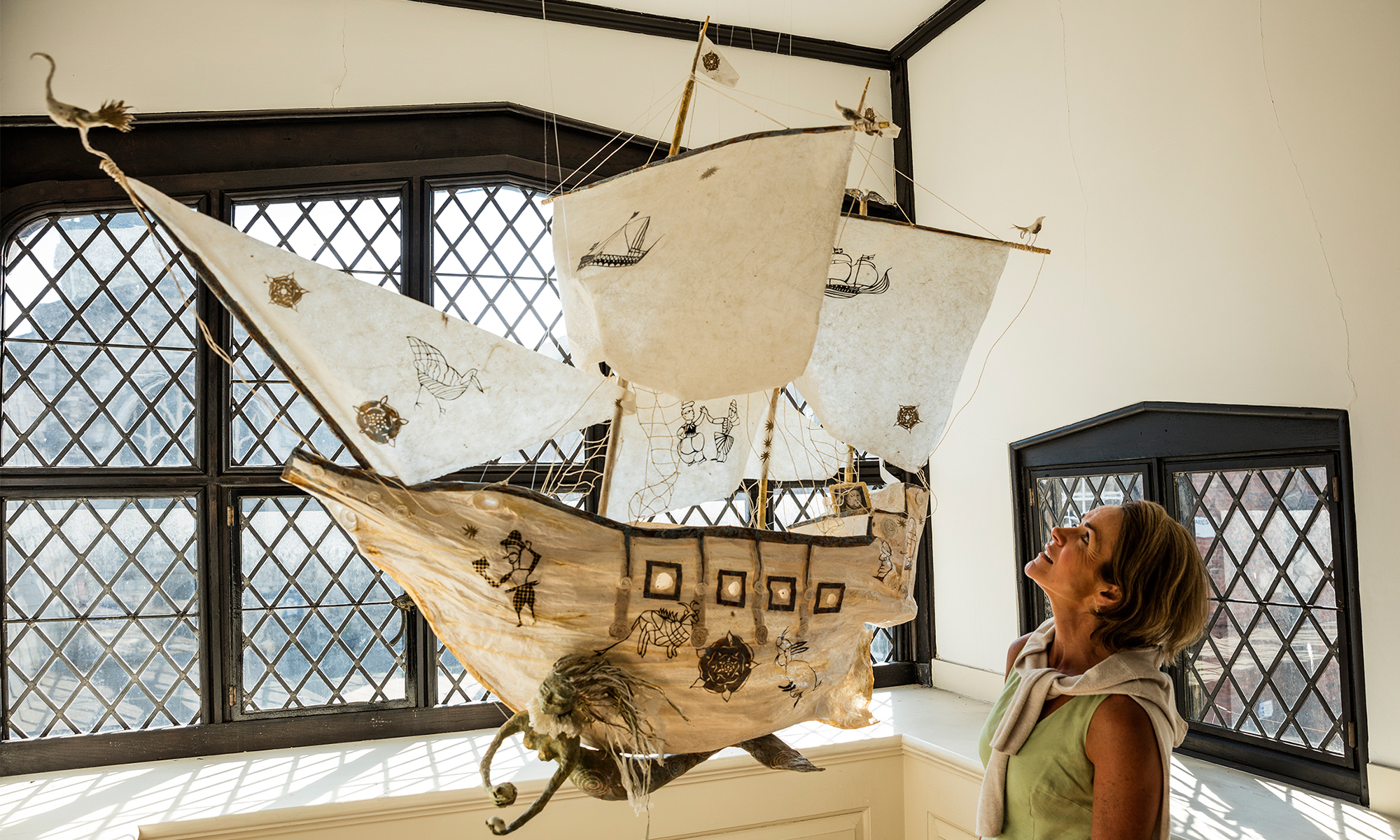
Undoubtedly Southampton’s most important historic building, Tudor House Museum is located at the heart of the Old Town.
The timber-framed building facing St Michael’s Square was built in the late 15th Century, with King John’s Palace, an adjacent Norman house accessible from Tudor House Garden, dating back a further 300 years.
Tudor House gives a unique and atmospheric insight into the lives and times of both its residents through the years, and of Southampton itself.
It appeals to visitors of all ages and interests, who find the family-friendly activities, interactive technology and fascinating displays a winning combination.
8) There are eight other ‘Southamptons’ in the world

It may be one of a kind to those who live in the Hampshire city, but there are actually NINE places across the world that are named ‘Southampton’.
Amazingly, six of those are located in North America - with ‘Southamptons’ in Maryland, Massachusetts, New York, Pennsylvania, Utah and Virginia.
You’ll also find two ‘Southamptons’ in Canada, in New Brunswick and Ontario.
The distance from Southampton, UK, to Southampton in New York is around 3,345 miles as the crow flies.
9) You can follow in the Pilgrims’ footsteps

The Southampton Mayflower Trail allows visitors to take a stroll around 1620 Southampton, exploring the very walls and streets the Pilgrims would have walked during their stop in maritime city.
Discover the spots where the Mayflower passengers would have bought their supplies as you walk through the original gates through which they would have passed.
Meanwhile, a Mayflower exhibition at SeaCity Museum focuses on both the nature of commemoration and how previous Mayflower anniversaries have been marked. This is supported by an exhibition at Tudor House & Garden which tells the Mayflower story.
10) … and learn more about them

Southampton hosted a number of fantastic events and activities during the Mayflower 400 commemoration year.
Find out more about Southampton’s Mayflower programme here.
Sign up for the latest Mayflower 400 news
You'll be the first to hear the latest Mayflower news, events, and more.
Log In
Register
Mayflower 400 Proudly Supported by our National Sponsors and Funding Partners






